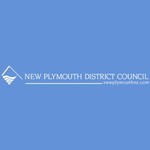Major Changes Mooted for Citys Eastern Corridor
A variety of changes to improve traffic flows in New Plymouth has been proposed – and shortly the community will be able to have their say.
Public consultation will start next Monday (19 May) on New Plymouth District’s Strategic Transport Study, a joint NPDC/Transit New Zealand project which will manage the district’s road developments for the next 25 years and beyond.
“Many of these proposed developments – nearly all of which are on Transit’s state highways – are very exciting but they would take time to realise,” says General Manager Community Assets Anthony Wilson.
“Even if the strategic transport study is ultimately approved by the council next year, the road developments would not be built the next day.
“Between amending the District Plan, finding funding, acquiring the necessary land and meeting a variety of statutory processes, these developments would take place over several years – there is no magic wand with major road projects.”
A supplementary computer traffic design model on traffic movements in the eastern suburbs, including five potential sites for a second traffic crossing of the Waiwhakaiho River, will be completed by the end of August.
Information on the transport study and submission forms will be at the Civic Centre and district libraries, and in the Have Your Say section of this website. A public presentation will be held at 7pm on Wednesday 28 May at the Civic Centre, and submissions will close on Friday 6 June with a report on the feedback then going to the council.
The final Strategic Transport Study will go to the Regional Land Transport Committee which is responsible for prioritising capital projects for state highways and local roads throughout the region.
Traffic Design Group, which developed the document, has found that with the exception of Northgate/Waiwhakaiho the city’s road network capacity is generally adequate to handle the growth in traffic flows for the next 40 years.
The Waiwhakaiho Bridge currently carries an average of 35,000 vehicles per day, which is projected to grow by between two and four per cent per year – meaning up to 48 per cent more vehicles in 10 years’ time.
“These aren’t provincial traffic numbers we’re dealing with: They’re big city traffic numbers,” says Mr Wilson.
“While there are many routes from the city’s western and southern suburbs to feed the central city, there is just the one route from the eastern areas – Waiwhakaiho.”
To improve the eastern corridor, the proposed strategic transport study includes:
A combination of four and five-lane roads from the Hobson/Northgate intersection at the Plymouth Hotel to just before the Devon/Northgate intersection at Fitzroy, then six lanes through Waiwhakaiho to Vickers Rd.
Extra lanes at the eastern end of the Courtenay and Leach one-way streets.
A right-turning lane from Northgate onto Hobson St (outside the Plymouth Hotel) with traffic lights at Hobson/Leach and Hobson/Courtenay, to make this the preferred traffic route through to Port Taranaki from the east.
Watson St/Northgate intersection: No access to and from the side road.
Te Henui Stream bridge next to New Plymouth Girls’ High School: Five lanes.
Mangorei/Northgate intersection: Seven lanes on Northgate (including two right-turning lanes into Mangorei south), five lanes on Mangorei south and three on Mangorei north.
Devon/Northgate intersection: Retain right and left turns into and out of Fitzroy (subject to results from the eastern suburbs’ computer traffic design model).
Waiwhakaiho Bridge: Six lanes (three in each direction).
Smart/Devon intersection: Eight lanes on each of Devon east and Devon west.
Vickers/Devon intersection: Access retained to The Valley via traffic lights.
All of the road developments would have dedicated cycle lanes along their length, and special facilities for cyclists at intersections.
Other developments on the city’s road network would include:
Traffic signals at Leach/Gover and Morley/Vivian intersections.
A half-roundabout at Moturoa to handle the St Aubyn/Lawry/South intersection.
Road widening and reconfiguration on some arterial and collector roads to provide for cycle lanes.
“During this transport study we also looked at a variety of other issues that have been raised by the public,” says Mr Wilson.
“Traffic Design Group found that a ring road to the south of the city or a new route linking SH3 South to Frankley Rd and Tukapa St, as an alternative for Port Taranaki traffic, just aren’t economically viable.
“Also, we’ve found that heavy traffic bypasses of Urenui, Inglewood, Oakura and Okato aren’t economic. We’ll instead handle any issues within the existing roading system.
“As for a second crossing of the Waiwhakaiho River, we do think it will be necessary at some point – but the existing bridge will still need to be widened to six lanes.”
The last transport study was prepared in 1968 and was updated in 1976. Out of that report came two key developments: The one-way system in the city to bypass the CBD, and Northgate to bypass Fitzroy.
“We didn’t build a lot of the 1968 report’s projects until 1984, which shows how long these types of developments can take,” says Mr Wilson.
